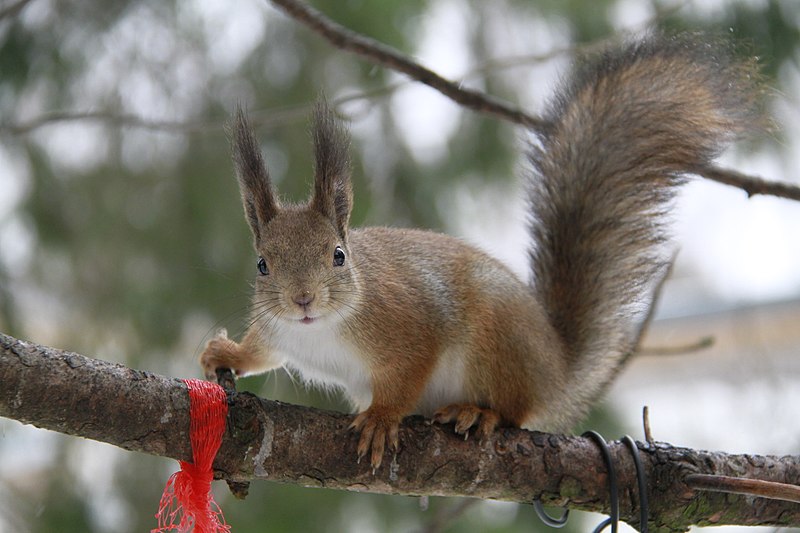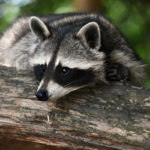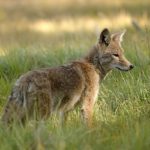Yes, flying squirrels can carry diseases, but there’s more to know.
Flying squirrels might look adorable, but are they harboring hidden dangers? Picture this: you’re relaxing at home, perhaps reading a book or watching your favorite show, and you catch a glimpse of a tiny, furry figure gliding effortlessly through the air. Your first thought might be how cute and fascinating these little acrobats are. But hold on could these seemingly harmless critters be carrying diseases that pose a threat to your health and safety?
In this article, we’ll dive into whether these furry acrobats are health hazards and what you need to know to stay safe. By the end, you’ll have a clear understanding of the risks involved and how to protect yourself and your loved ones from potential harm.
Key Takeaways
- Flying squirrels can carry certain diseases.
- Specific diseases include Leptospirosis, Salmonella, and others.
- Signs of flying squirrel presence in your home.
- Prevention and control measures to keep your home safe.
Meet the Flying Squirrels
Flying squirrels are fascinating creatures that belong to the family Sciuridae, the same family as tree squirrels and ground squirrels. Unlike their relatives, flying squirrels have a unique adaptation: a patagium, which is a furry, parachute-like membrane stretching from their wrists to their ankles. This adaptation allows them to glide gracefully from tree to tree, making them the acrobats of the rodent world.
These nocturnal rodents are primarily found in North America, with the Northern flying squirrel and the Southern flying squirrel being the most common species. They inhabit forests, woodlands, and suburban areas where they can find plenty of trees to glide between. Their diet mainly consists of nuts, seeds, fruits, and insects, but they have been known to eat bird eggs and nestlings when food is scarce.
Flying squirrels are social animals, often living in small colonies, especially during the colder months when they huddle together for warmth. Their nests, known as dreys, are typically found in tree cavities, abandoned woodpecker holes, or even in attics and walls of homes, which brings us to our main concern.
While their gliding antics are certainly entertaining, it’s important to be aware that flying squirrels, like many wild animals, can carry diseases that might pose health risks to humans and pets. Understanding their habits and behaviors is the first step in recognizing and mitigating these risks.

Can Flying Squirrels Carry Diseases?
So, can flying squirrels carry diseases? The short answer is yes, they can. While they might look cute and harmless, these tiny acrobats can be carriers of various diseases that could pose risks to humans and pets. It’s not just their presence that’s concerning, but also the potential health hazards they bring along.
Wildlife, in general, can be vectors for disease transmission, and flying squirrels are no exception. They can harbor pathogens that are harmful to humans, especially if they invade your home. Understanding how these diseases are transmitted is crucial for protecting yourself and your family.
One of the primary ways diseases spread is through direct contact with the animals or their waste products. Flying squirrels can leave droppings, urine, and saliva around their nesting areas, which can contaminate surfaces and air within your home. Additionally, they might carry parasites such as fleas, mites, and ticks, which can further spread diseases.
Another concern is the potential for airborne transmission. When flying squirrels nest in attics or walls, their waste can dry out and become airborne, leading to respiratory issues when inhaled. This makes it essential to address any infestations promptly and thoroughly.
It’s important to note that while the risk of contracting diseases from flying squirrels exists, it’s relatively low with proper precautions. Awareness and preventive measures play a significant role in minimizing these risks. In the next section, we’ll delve into some of the specific diseases that flying squirrels can carry and what you need to know about the
Common Diseases Carried by Flying Squirrels
Flying squirrels, like many wild animals, can be carriers of several diseases. Here are some of the most common ones that you should be aware of:
Leptospirosis
Leptospirosis is a bacterial disease that can affect both humans and animals. It’s caused by bacteria of the genus Leptospira, which can be found in the urine of infected animals, including flying squirrels. Humans can contract this disease through direct contact with contaminated water, soil, or food. Symptoms in humans can range from mild flu-like symptoms to severe illness, including liver damage, kidney failure, and meningitis. Preventive measures include avoiding contact with potentially contaminated areas and ensuring proper sanitation and hygiene if you suspect flying squirrel activity.
Salmonella
Salmonella is a well-known bacterial infection that affects the intestinal tract. Flying squirrels can carry Salmonella bacteria, which can be spread through their droppings. Humans can contract Salmonella by handling contaminated objects or surfaces and then touching their mouths or by consuming contaminated food or water. Symptoms typically include diarrhea, fever, and abdominal cramps. It’s important to clean any areas where flying squirrels may have been and to wash hands thoroughly after any potential exposure.
Other Diseases
Flying squirrels can also be vectors for other diseases, though less commonly. These include:
- Lyme Disease: While primarily transmitted by ticks, flying squirrels can carry ticks that harbor the bacteria causing Lyme disease. Symptoms include fever, headache, fatigue, and a characteristic skin rash.
- Typhus: Flying squirrels can be infested with fleas that carry Rickettsia bacteria, the cause of Typhus. Symptoms include fever, headache, rash, and muscle pain.
Signs of Flying Squirrel Infestation
Flying squirrels might be elusive, but they leave behind telltale signs of their presence. If you suspect these nocturnal flyers have taken up residence in your home, here are some key indicators to watch for:
Nocturnal Activity and Noises
Flying squirrels are nocturnal, meaning they are most active during the night. If you hear scurrying, scratching, or chattering sounds in your attic or walls after dusk, it could be a sign of a flying squirrel infestation. These noises are often more pronounced in the early evening or late at night when the squirrels are most active.
Droppings and Urine Stains
One of the more obvious signs of an infestation is the presence of droppings. Flying squirrel droppings are small, dark, and elongated, similar to those of other small rodents. You might find these droppings in attics, near entry points, or along their travel routes. Additionally, urine stains on insulation, wood, or other surfaces can indicate their presence. Over time, the smell of urine can become quite strong and unpleasant.
Nesting Materials
Flying squirrels build nests, also known as dreys, using a variety of materials such as leaves, twigs, bark, and shredded insulation. If you find piles of these materials in secluded areas of your home, especially in attics or wall cavities, it’s a strong indication that flying squirrels have moved in. They often prefer warm, quiet areas to build their nests.
Gnaw Marks
Like all rodents, flying squirrels have ever-growing teeth and need to gnaw to keep them trimmed. Look for gnaw marks on wooden beams, wires, and other materials in your attic or near potential entry points. These marks can also be found on food packaging or other household items if the squirrels have ventured further into your living spaces.
Identifying these signs early can help you address the problem before it becomes more severe. If you notice any of these indicators, it’s crucial to take action promptly to prevent damage and potential health risks.
Health Risks and Symptoms
Understanding the potential health risks posed by flying squirrels is crucial for protecting yourself and your loved ones. Here are some of the primary health concerns associated with these furry invaders and the symptoms to watch out for:
Health Risks
Flying squirrels can carry and transmit several diseases that may impact humans and pets. While not all interactions with these animals will result in illness, it’s important to be aware of the risks and take preventive measures.
- Leptospirosis: As mentioned earlier, this bacterial infection can cause a range of symptoms from mild flu-like illness to severe complications affecting the liver and kidneys. It’s primarily spread through contact with contaminated water or soil.
- Salmonella: This common bacterial infection can lead to gastrointestinal distress, including diarrhea, fever, and abdominal cramps. Contamination typically occurs through contact with droppings or contaminated surfaces.
- Lyme Disease: Although more commonly associated with ticks, flying squirrels can carry ticks that transmit this disease. Symptoms include fever, headache, fatigue, and a characteristic bull’s-eye rash.
- Typhus: Fleas from flying squirrels can transmit Typhus, causing symptoms such as fever, headache, rash, and muscle pain.
Symptoms to Watch Out For
If you or your pets have been exposed to flying squirrels, it’s important to monitor for any signs of illness. Here are some symptoms associated with the diseases carried by these animals:
- Leptospirosis: Fever, chills, muscle aches, headache, vomiting, jaundice (yellowing of the skin and eyes), red eyes, abdominal pain, diarrhea, and rash.
- Salmonella: Diarrhea, fever, abdominal cramps, nausea, vomiting, and headache. Symptoms usually appear 6 hours to 6 days after infection and can last 4 to 7 days.
- Lyme Disease: Fever, chills, headache, fatigue, muscle and joint aches, swollen lymph nodes, and a characteristic bull’s-eye rash at the site of the tick bite.
- Typhus: Fever, headache, rash, muscle pain, and chills. Symptoms typically appear within 1 to 2 weeks after exposure.
When to Seek Medical Attention
If you experience any of these symptoms after coming into contact with flying squirrels or their nesting areas, it’s important to seek medical attention promptly. Early diagnosis and treatment can significantly improve outcomes, especially for diseases like Leptospirosis and Lyme disease.
Pets that exhibit symptoms such as lethargy, loss of appetite, vomiting, or unusual behavior should also be seen by a veterinarian, as they can be affected by the same diseases.
Preventive Measures
Taking proactive steps to prevent flying squirrels from invading your home is key to minimizing health risks and avoiding the hassles of an infestation. Here are some effective preventive measures to keep these agile critters at bay:
Seal Entry Points
Flying squirrels can squeeze through surprisingly small openings, so it’s essential to thoroughly inspect your home for potential entry points. Pay close attention to areas around the roofline, vents, chimneys, and gaps in siding. Use durable materials such as metal mesh or hardware cloth to seal these openings. For larger gaps, consider using expandable foam or caulk to close them off. Regular maintenance of your home’s exterior can help prevent new entry points from developing.
Trim Overhanging Branches
Since flying squirrels glide from tree to tree, branches that hang over or near your home can serve as launching pads for them to access your roof. Trim back any tree branches that are within 6 to 8 feet of your house to reduce the chances of squirrels gaining entry. This also helps to prevent other pests like raccoons and rodents from reaching your home.
Secure Food Sources
Flying squirrels, like many other wildlife species, are attracted to easily accessible food sources. To deter them, store pet food, bird seed, and other potential food items in sealed containers. Avoid leaving food scraps or garbage outside overnight, and use animal-proof trash cans if possible. Additionally, clean up any fallen fruit from trees in your yard promptly.
Install Squirrel-Proof Barriers
Consider installing squirrel-proof barriers around your home to deter flying squirrels from accessing your roof and attic. One effective method is to install metal flashing around the base of trees and utility poles near your home. You can also use squirrel baffles on bird feeders and place them at least 10 feet away from any potential jumping-off points.
Maintain Your Attic and Home Exterior
Regularly check your attic and the exterior of your home for signs of damage or wear that could provide entry points for flying squirrels. Repair any broken vents, damaged soffits, or loose shingles promptly. Installing vent covers and chimney caps can also help prevent wildlife from entering your home.
What to Do if You Have Flying Squirrels
Discovering flying squirrels in your home can be alarming, but taking the right steps promptly can help mitigate any potential damage and health risks. Here’s a guide on what to do if you find yourself with these unexpected house guests:
Initial Steps to Take Upon Discovery
If you suspect or confirm the presence of flying squirrels in your home, it’s important to act quickly. Start by identifying where they are nesting and any potential entry points. Look for droppings, nesting materials, and gnaw marks to determine their main areas of activity. Once identified, try to isolate these areas to prevent the squirrels from accessing other parts of your home.
Importance of Professional Wildlife Removal Services
While DIY methods might seem appealing, dealing with flying squirrels often requires professional expertise. Wildlife removal experts are trained to handle these animals safely and humanely. They can effectively locate nests, safely remove the squirrels, and advise on preventative measures to avoid future infestations. Professionals also have the necessary tools and experience to handle the situation without causing harm to the animals or further damage to your home.
DIY Measures vs. Professional Help
While it’s generally recommended to seek professional assistance, there are some initial steps you can take if you’re unable to get immediate help:
- Set Up Traps: Live traps can be used to capture flying squirrels without harming them. Place the traps near their nesting areas and use bait such as nuts or seeds. Once captured, the squirrels should be released far from your home (at least 5 miles away) to prevent them from returning.
- Install One-Way Exclusion Doors: These devices allow squirrels to exit your home but prevent them from re-entering. Once you’re sure all squirrels have left, seal the entry points permanently.
- Clean and Disinfect: After the squirrels have been removed, thoroughly clean and disinfect the affected areas. This helps eliminate any lingering odors that might attract other wildlife and reduces the risk of disease transmission.
Long-Term Solutions
To ensure that flying squirrels do not return, implement the preventive measures mentioned earlier, such as sealing entry points, trimming tree branches, and securing food sources. Regularly inspect your home for any new potential entry points and address them promptly.
Remember, while DIY measures can be effective for initial control, professional wildlife removal services offer the best long-term solution to ensure that your home remains free from flying squirrels and other wildlife.
Professional Wildlife Removal Services
When dealing with flying squirrels, professional wildlife removal services offer a reliable and humane solution. Here’s a closer look at the benefits of hiring professionals and how to choose the right service for your needs:
Benefits of Hiring Professionals
Professional wildlife removal experts bring a wealth of knowledge and experience to the table. Here’s why their services are invaluable:
- Expertise and Training: Wildlife removal specialists are trained to understand the behaviors and habits of flying squirrels. This expertise allows them to efficiently locate nests, identify entry points, and implement effective removal strategies.
- Humane Methods: Professionals prioritize the humane treatment of animals. They use live traps and one-way exclusion doors to ensure that flying squirrels are safely removed and relocated without harm.
- Comprehensive Solutions: Beyond removal, professionals offer comprehensive solutions that address both the immediate issue and future prevention. This includes sealing entry points, providing cleanup services, and offering advice on how to squirrel-proof your home.
- Safety: Handling wildlife can be risky, particularly when dealing with potential disease carriers. Professionals have the necessary equipment and protective gear to manage the situation safely, reducing the risk of injury or illness.
Overview of Safe and Humane Removal Techniques
Professional wildlife removal services use a variety of techniques to ensure the safe and humane removal of flying squirrels:
- Live Trapping: This method involves using baited traps to capture flying squirrels alive. Once trapped, the animals are relocated to a suitable habitat far from your home.
- One-Way Exclusion Doors: These devices allow squirrels to exit your home but prevent them from re-entering. This method ensures that all animals are safely removed without the need for direct capture.
- Habitat Modification: Professionals may recommend changes to your home’s environment to make it less attractive to flying squirrels. This can include trimming tree branches, securing food sources, and sealing potential entry points.
How to Choose the Right Wildlife Removal Service
Selecting the right professional service is crucial for effective and humane wildlife removal. Here are some tips to help you choose:
- Check Credentials: Ensure that the company is licensed and certified to perform wildlife removal. Membership in professional organizations, such as the National Wildlife Control Operators Association (NWCOA), is a good indicator of their expertise and commitment to ethical practices.
- Read Reviews: Look for reviews and testimonials from previous clients. Positive feedback and high ratings can provide insight into the quality of the service.
- Ask About Methods: Inquire about the removal methods used by the company. Ensure they prioritize humane and safe techniques.
- Get a Written Estimate: Request a written estimate that outlines the scope of work, costs, and any guarantees offered. This helps avoid any surprises later on.
- Availability and Response Time: Choose a company that offers prompt response times and is available to address urgent situations
Living Harmoniously with Nature
While it’s important to keep flying squirrels and other wildlife out of our homes, it’s equally important to respect and coexist with these creatures in their natural habitats. Here are some ways to live harmoniously with nature while ensuring your home remains wildlife-free:
Encouraging Natural Habitats
One of the best ways to keep wildlife away from your home is to encourage them to stay in their natural habitats. Here’s how you can help:
- Provide Natural Food Sources: Plant native trees and shrubs that produce nuts, berries, and seeds, which are natural food sources for flying squirrels and other wildlife. This can help keep them well-fed and less likely to venture into human spaces.
- Create Wildlife-Friendly Areas: Designate parts of your yard as wildlife-friendly zones with natural shelters like brush piles, log piles, and birdhouses. These areas can provide safe habitats for flying squirrels and other animals, keeping them away from your home.
- Water Sources: Providing a water source, such as a birdbath or small pond, can attract wildlife to areas away from your house. Just ensure these water sources are maintained and clean to prevent attracting unwanted pests.
Promoting Awareness and Education
Educating yourself and your community about local wildlife can foster a sense of respect and understanding. Here are some steps to take:
- Learn About Local Wildlife: Take the time to learn about the wildlife species in your area, including their habits, habitats, and roles in the ecosystem. This knowledge can help you appreciate their presence and understand how to coexist with them.
- Share Knowledge: Share what you’ve learned with neighbors, friends, and family. Promoting awareness about the importance of wildlife and how to prevent conflicts can lead to a more wildlife-friendly community.
- Participate in Conservation Efforts: Get involved in local conservation efforts and wildlife protection programs. Supporting these initiatives can help preserve natural habitats and protect wildlife populations.
Balancing Wildlife and Human Habitats
Creating a balance between wildlife and human habitats is key to peaceful coexistence. Here’s how you can achieve this:
- Wildlife Corridors: Support the creation and maintenance of wildlife corridors that connect natural habitats. These corridors allow animals to move safely between areas without encroaching on human spaces.
- Sustainable Practices: Adopt sustainable practices in your daily life, such as reducing waste, using eco-friendly products, and conserving water. These practices help protect the environment and the habitats of local wildlife.
- Respect Boundaries: Respect the boundaries of natural habitats by avoiding encroachment and minimizing disturbances. When exploring nature, stick to designated trails and avoid disturbing wildlife.
Conclusion
Flying squirrels, with their unique gliding abilities and nocturnal habits, are fascinating creatures that play an important role in our ecosystem. However, their presence in your home can pose significant health risks and cause structural damage. By understanding the potential dangers and taking proactive measures, you can protect your home and family from these acrobatic invaders.
We’ve covered a lot of ground in this article—from identifying the signs of an infestation to understanding the diseases flying squirrels can carry and implementing effective preventive measures. Here are the key points to remember:
- Flying squirrels can indeed carry diseases such as Leptospirosis, Salmonella, Lyme Disease, and Typhus.
- Signs of an infestation include nocturnal noises, droppings, urine stains, nesting materials, and gnaw marks.
- To prevent an infestation, seal entry points, trim overhanging branches, secure food sources, and install squirrel-proof barriers.
- If you discover flying squirrels in your home, seek professional wildlife removal services to ensure safe and humane removal.
- Living harmoniously with nature involves creating wildlife-friendly areas, promoting awareness and education, and adopting sustainable practices.
By staying vigilant and informed, you can enjoy the wonder of wildlife without compromising the safety and comfort of your home. Remember, taking early action and seeking professional help when needed are crucial steps in managing wildlife encounters effectively.
So next time you spot a flying squirrel gracefully gliding through the trees, you can appreciate its beauty and agility from a safe distance, knowing you’ve taken the necessary steps to keep your home secure.














